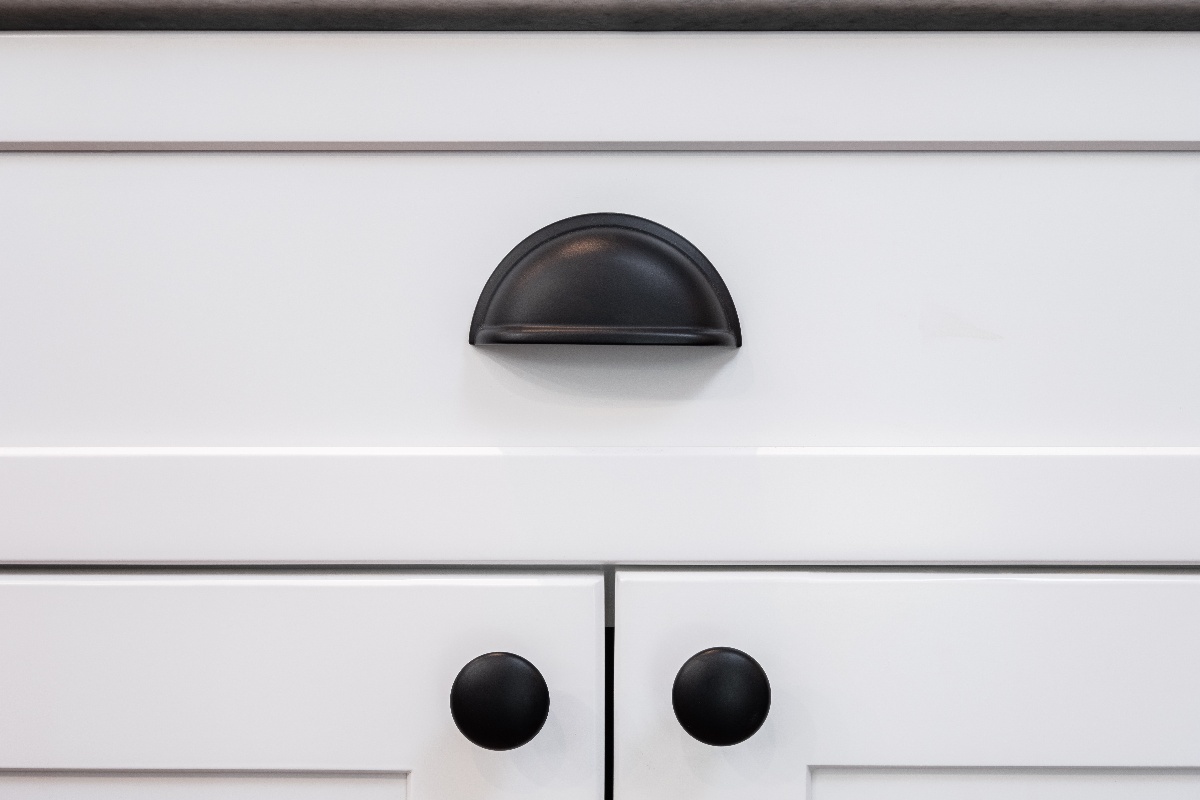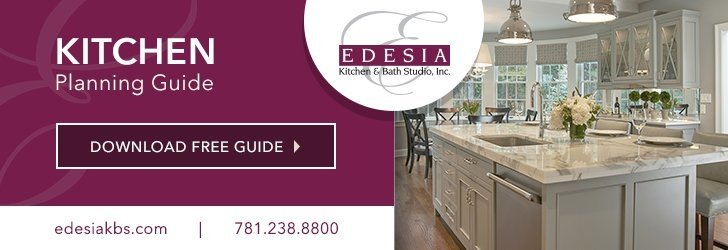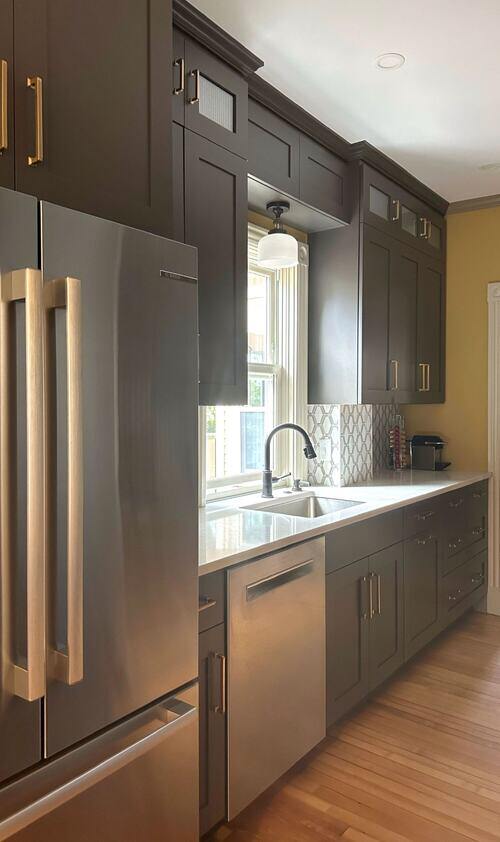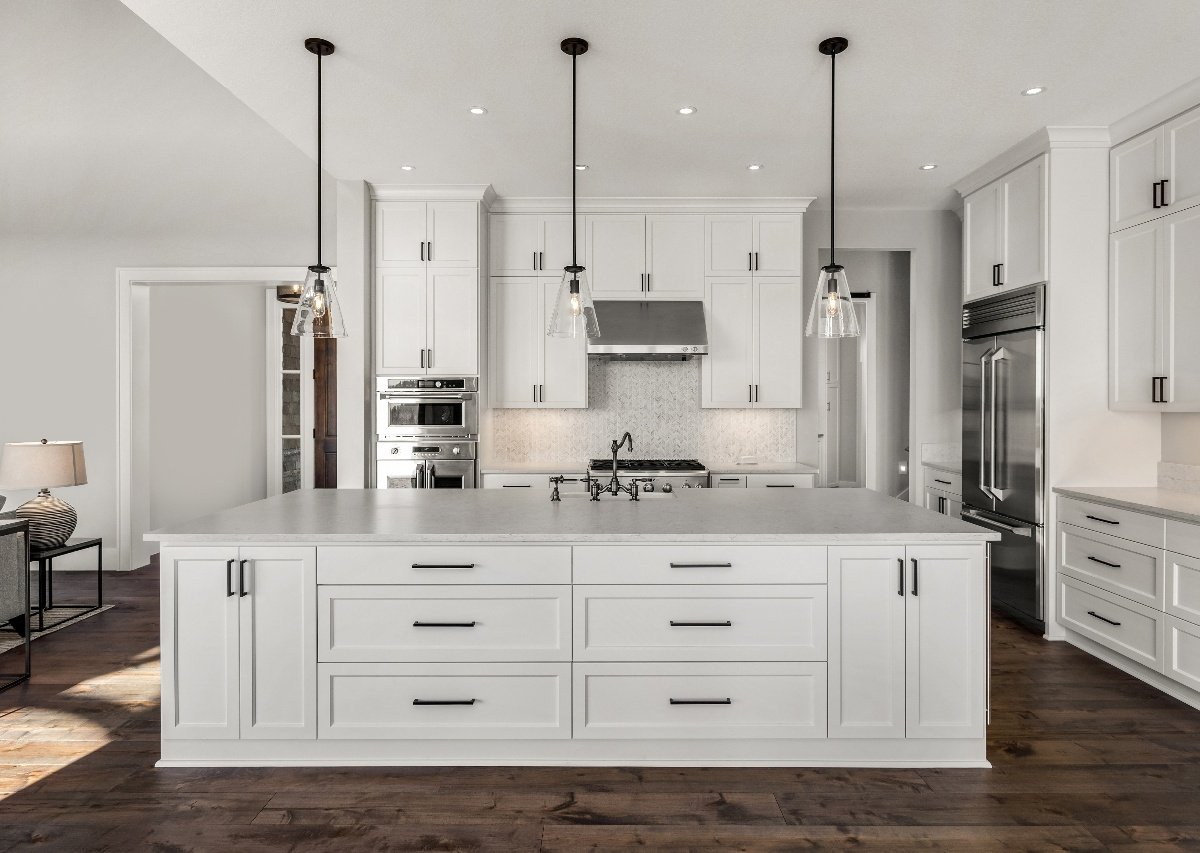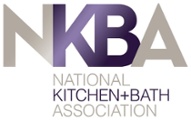At a glance, most kitchens have the same cabinet knob placement designs. They are small, within reach, and generally make your kitchen easy to use. Most people wouldn't give their cabinet knob placement a second thought. Of course, when installing or replacing cabinet hardware, the right place to drill your pilot hole will depend on exactly where you want to knob, bar, or drawer pull.
You might be surprised to learn that different kitchen styles do, indeed, have subtly different placements for cabinet knobs and pulls. As kitchen design specialists, Edesia can walk you through the understated differences and how to choose the hardware placement that works best fr your kitchen style.
Upper vs Lower Cabinet Knob Placement
First, let's talk about the difference between upper and lower cabinet knob placement. For upper cabinets, the knob is usually located in the lower corner on the opening side, making it easy to reach up and flip open upper cabinets.
For lower cabinets, the knob is located in the upper corner. This means that upper and lower cabinets that are aligned will have knobs that face each other at close parallel points above and below the countertop.
Traditional, Classic, and Modern Knob Alignment
But where, exactly, should you place cabinet knobs in reference to the central bevel that many cabinet styles have? To discuss this, first visualize dimensions. Most cabinets are a large rectangle with a smaller rectangle centered in the middle. Traditional style puts the knob in the middle of the diagonal line of the outer face frame, along the corner angle.
Classic style cabinets align the knob with the inner rectangle's horizontal line, so that it is higher on upper cabinets or lower on lower cabinets than traditional style. They may even go slightly deeper than the line.
Modern style is similar to classic, with the knob aligned with the inner rectangle and centered between the frame and cabinet edge.
Cabinet Bars vs Cabinet Knobs & Their Placement
Placement also changes if you opt for bar pulls instead of knobs. With the placement for bar pulls, the outermost end should align with the stylistic knob placement, while the inner end will extend either up for upper cabinets or down for lower cabinets appropriately.
Bar pulls for cupboards and pantries, however, are more likely to be placed in the center of the cabinet door's outer edge rather than in the corner. This is more convenient for storage that will be directly in front of the user, rather than above or below.
Knob and Cabinet Latch Placement
While we're discussing the importance of cabinet hardware placement, don't forget to align your cabinet latch with the location of the knob or pull. This is because you want the greatest ease releasing the latch with a tug. Otherwise, you risk frustration should a cabinet latch become sticky or have a particularly strong magnet.
Centered vs Raised Drawer Pulls
Lastly, consider the placement of kitchen drawer pulls, which play a role in your cabinet hardware choices. Drawers also typically have knobs or bar pulls, but are more likely to feature bars for comfort and ease of use. Drawer pulls are always centered horizontally, however, vertical placement can become a matter of style.
Most often, you will see drawer pulls perfectly centered in the face of the drawer. However, drawers are more conveniently opened when the pull is located at the top where force is most efficiently applied. Your choice of centered or raised drawer pull location is a matter of both style and practicality.
Your Cabinets, Your Way
With Edesia Kitchen and Bath Studio, we can help you design the ideal cabinets for your kitchen remodel. Whether you are rebuilding your cabinets from scratch or updating the styles on existing cabinetry, we can ensure that your vision becomes complete with the right kitchen cabinet hardware and stylistic placement. Contact us to consult on your next kitchen design.

